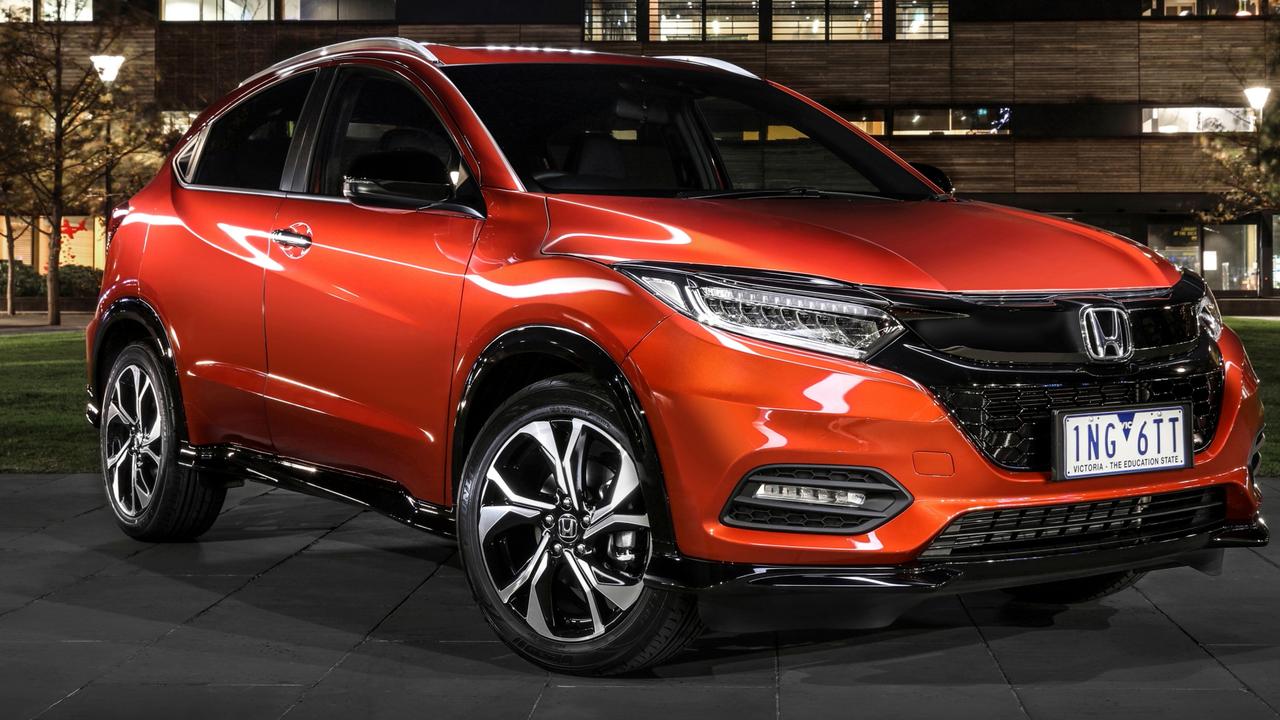Volkswagen Amarok ute review: Smokin’ gun
A diesel shared with Porsche makes VW’s ute the strongest tool in the tradies’ shed.

BRAGGING rights at job sites — and at kids’ soccer — just got a whole lot tougher.
Volkswagen has introduced Porsche’s Cayenne V6 turbo diesel power to the Amarok ute, making it the biggest gun in town among one-tonne utes with 165kW/550Nm (the latter figure almost a match for an HSV Clubsport).
The engine is reserved for the top models: the Highline and the newly named Aventura, which are likely to cost between $55,000 and $70,000 when they arrive in local showrooms later this year.

The last time we had a workhorse with this much grunt was the 170kW/550Nm Nissan Navara, powered by a 3.0-litre V6 twin turbo from Renault, which sold from 2011 to 2015.
With that model off the shelf, VW now has the most mumbo. But how it came about will have you scratching your head.
Strict new emissions standards in Europe have benched the Amarok’s 2.0-litre four-cylinder twin turbo diesel (although this engine will continue in Australia as our regulations are years behind).
So VW went looking for a replacement and found the 3.0 turbo diesel, as used in the Cayenne, Audi Q7 and a raft of its other models.
In the Amarok, the engine is detuned to handle the ute’s payload and towing capacity, as well as meeting tough new emissions standards.
In Europe the Amarok 3.0 TDI can haul 3500kg but in Australia it’s restricted to 3000kg due to our hot climate.
With the engine upgrade comes an improvement to what was already one of the classiest cabins in the ute category.
A new wider dash display (now with Apple CarPlay) is complemented by larger storage areas, although it’s still not perfect.

There are three 12V power sockets upfront but only one USB — and no household power point, as fitted in the top end Toyota HiLux and Ford Ranger.
There’s no sensor key either (standard on HiLux SR5), and the VW’s large hand brake lever cramps the centre console. At least the door pockets are huge and can swallow a 1.5-litre bottle.
The overall cabin comfort is excellent (you really notice the extra width versus the others in the class) and the presentation is up-market, although some of the plastics are hard to the touch.
Moving with the times, VW tips the Amarok to be used as a work vehicle during the week and a family car on weekends.

It is remarkable, then, that Volkswagen has still not fitted rear airbags to the Amarok, six years after the model went on sale and four years after rear occupant protection was mandated for a five-star safety rating in Australia. All other top-selling utes have six or seven airbags.
If the Amarok were tested today, it would score a four-star crash test rating, effectively excluding it from many mining sites and fleet order lists.
The Amarok also lacks radar cruise control, lane keeping, blind zone warning, rear cross traffic alert and automatic emergency braking, even though VW has all these features on the shelf.
Ford and Toyota either have these features in utes or are working on them, with showroom arrivals around the corner.
Meanwhile, VW says it plans to add rear airbags (and an airbag compatible bullbar) some time in the next few years, before the current generation makes way for an all-new model.
ON THE ROAD

The V6 TDI is so quiet you need to open the windows to hear it, and even then it’s relatively muted.
There’s ample grunt, though. VW claims 7.9 seconds for the 0-100kmh dash, well in front of rivals that take 10 to 12 seconds to reach the speed limit.
With 2150kg to 2320kg to shift (heavy even by class standards), the Amarok still feels more like a ute than a performance car — in fact, it feels more like an SUV, which is still a massive compliment for a ute.
The 14-way adjustable seats in the top-of-the-range Aventura model have been endorsed by German spinal specialists — and now by me. They’re the best seats ever fitted to a ute.
The ride comfort over bumps is up there with the best (Ford’s Ranger XLT) and the eight-speed auto is smooth and predictable.
In a first for the class, there are paddle-shifters on the steering wheel. The electronic power steering is light at parking speeds but is tuned to feel artificially heavy at, say, 40km/h when taking a corner. It then feels light again once the road straightens out.

The massive 20-inch wheels play a role in that but so too does the steering calibration. We reckon there’s room for further finessing.
Another first for the workhorse class: four-wheel disc brakes. Everyone else has rear drums. VW says it was obliged to match the V6’s power with a boost in braking.
VERDICT
The Amarok 3.0 TDI sets a new benchmark for power, luxury and refinement. But it lags behind Ford and Toyota in safety, technology and towing capacity. It’s a great truck but could and should have been better than this by now.
AT A GLANCE
VOLKSWAGEN AMAROK
PRICE $65,000 (est)
WARRANTY 3 years/unlimited km
CAPPED SERVICING $1733 over 3 years (est)
SERVICE INTERVAL 12 months/15,000km
SAFETY ★★★★★
ENGINE 3.0-litre V6 turbo diesel, 165kW/550Nm
TRANSMISSION 8-speed auto; AWD
THIRST 7.6L/100km (est)
DIMENSIONS 5254mm (L), 1954mm (W), 1820mm (H), 3095mm (WB)
WEIGHT 2150kg-2320kg
SPARE Full-size alloy
0-100KM/H 7.9 secs
TOWING 3000kg



